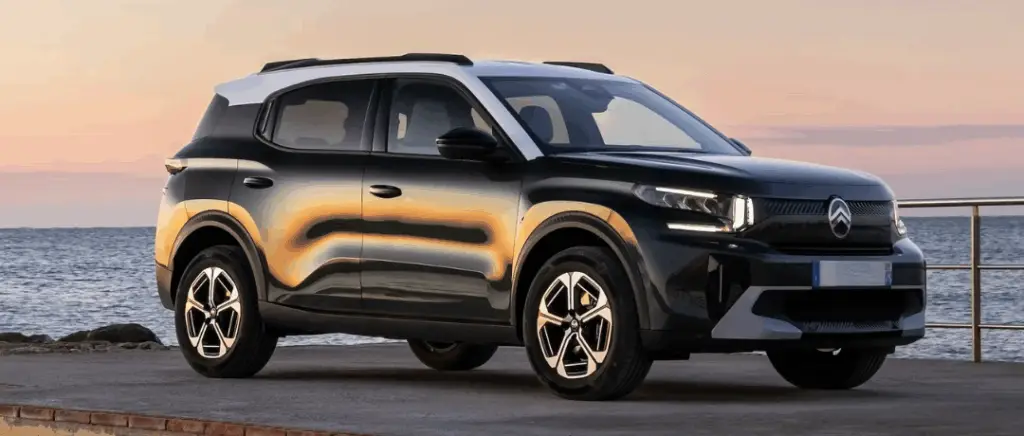Would you like to install a recharging point?
Beev can help you find the charging point and installer you need, at the best price.
Charging your electric car at home in the rain: everything you need to know for safe and easy charging
Standard domestic socket: avoid
When the time comes to recharge a electric carThe temptation to use a standard household plug may seem like a practical solution, especially in the rain. However, this approach involves major risks and disadvantages that require particular attention, especially in wet weather.
In fact, standard household sockets are not generally designed to withstand high electrical loads over long periods, which can lead to risks of overheating and electrical overloading, particularly in humid conditions.
In addition, prolonged use of these sockets to charge an electric vehicle can damage the domestic electricity network, leading to considerable repair costs, a problem potentially exacerbated by adverse weather conditions.
What's more, the recharging time using a standard domestic socket is significantly longer, which can make this method of recharging inefficient and impractical, especially when it's raining. So to ensure the safety, reliability and efficiency of recharging your electric carIn view of this, we strongly recommend avoiding the use of standard household plugs, especially in the rain, and opting instead for dedicated, secure recharging solutions.
Does the recharging point work normally in the rain?
It is important to ensure that the charging point that you use is compatible with the international IP65 standard. IP65 protection means that the bollard is dust-tight and resistant to water splashes. If you find a bollard with IP66 protection, this means that it is resistant to strong jets of water. IP67 protection means that the bollard is protected against temporary submersion, while IP68 means that the bollard may be completely submersible under certain conditions.
In terms of comfort in the rain, there are recharging shades or recharging carports that incorporate recharging points and solar panels. This improves the comfort of electric vehicle users while promoting an innovative, eco-responsible image.
To determine the surface area of solar panels you need for your solar car park shade, you need to take into account the number of charging points. On average, there are around 9 solar panels per charging point, or a surface area of around 20 m2. This covers the annual consumption of around 3,000 kWh by an electric vehicle. The equipment complies with current standards and is manufactured mainly in the Hauts de France region, using local raw materials such as wood and steel. The electronic components are of European origin.
In short, it's essential to check that the charging point has IP65 or better protection to withstand dust and water. Charging stations with solar panels are an interesting option for improving charging comfort while being environmentally friendly. To determine the surface area of solar panels required, we recommend that you count on around 9 solar panels per charging point, which represents around 20 m2.
However, it's always a good idea to take a few precautions when charging your electric car in the rain:
- If possible, choose a charging point in a sheltered location.
- Check that the cables and connectors are in good condition and show no signs of wear.
- If you notice any puddles of water around the charging point, do not use it and contact the support service.
Read more: Mandatory photovoltaic shading for car parks: a measure to promote the energy transition
Why aren't electric cars afraid of water?
Electric cars are not afraid of water. They are designed to withstand the elements, including rain, snow and puddles. Here are a few reasons why:
Protection against moisture:
- Seals and waterproof materials: Electric cars are fitted with rubber seals and waterproof materials all around the vehicle, inside and out. This protects the electrical components from moisture and infiltration.
- Sealed enclosures: Sensitive electrical components, such as the motor and the batteryThese are housed in sealed enclosures that protect them from water and dust.
- Rigorous testing: Car manufacturers put their electric vehicles through rigorous tests to ensure they can withstand extreme weather conditions, including heavy rain and flooding.
Electrical safety:
- Low-voltage electrical systems: Electric cars use low-voltage electrical systems (generally 400 volts), which reduces the risk of electric shock in the event of contact with water.
- Safety devices: Electric vehicles are equipped with circuit breakers and fuses that automatically cut off the power supply in the event of a problem, such as a short-circuit caused by water.
Rain and electric recharging: Tips and solutions for a worry-free experience
Favour sheltered areas
When it comes to recharging your electric vehicle in the rain, it's advisable to use sheltered areas to avoid direct contact with water. This means parking your electric car near a covered area such as a garage, carport or covered charging point.
If you use a Wallbox or an external reinforced socket, make sure it is correctly installed and weatherproof, with water protection measures in place to minimise the risk of water ingress or short-circuiting. Also check that the charging cable is well insulated and protected against moisture.
In the event of heavy rain or thunderstorms, it is advisable to postpone recharging if possible, and to avoid handling the electrical components of the Wallbox or the vehicle when they are wet. Bear in mind that safety must always be a priority when recharging in the rain.
In short, it's best to charge your electric vehicle in a sheltered area to minimise the risks associated with exposure to water. Make sure that your Wallbox or reinforced socket is correctly installed and protected against moisture. Take care when handling electrical components in heavy rain or thunderstorms.
A few precautions to take beforehand
It's best to give priority to charging in a covered, dry place. For example, you can charge your car in your garage overnight during off-peak hours, which saves money on recharging while avoiding the risks associated with humidity.
A recommended solution is to install a home charging point to ensure that your electric car or plug-in hybrid charges safely and up to three times faster.
It's important to read your vehicle's owner's manual carefully and follow the instructions given for recharging. Here are a few precautions to take:
- Avoid charging and washing the car at the same time.
- Do not touch the charger, cables or charging point with wet hands.
- Do not use the connector and charging plug if they are wet.
- Avoid using charging points that are damp or have defects on the protective casing.
- Avoid recharging your electric vehicle when your feet are in water or snow.
If moisture does manage to seep into your vehicle's connector, do not dry it with an absorbent cloth, as contact could be dangerous. Instead, use a compressed air blower to dry it effectively.
Conclusion
In short, while charging electric cars in the rain is a practice that requires a cautious approach, Beev, a company specialising in electric mobility, offers tailor-made solutions to meet your needs. Their expertise includes the installation of weatherproof charging stations, ensuring safe and efficient charging even in difficult weather conditions.
When you call on Beev, you benefit from their know-how and experience to ensure a smooth transition to electric mobility, with particular attention paid to the safety and reliability of your recharging system.
If you would like to find out more aboutsupport for the installation of charging points for businesses in 2024For more information, see our article on this subject.
































